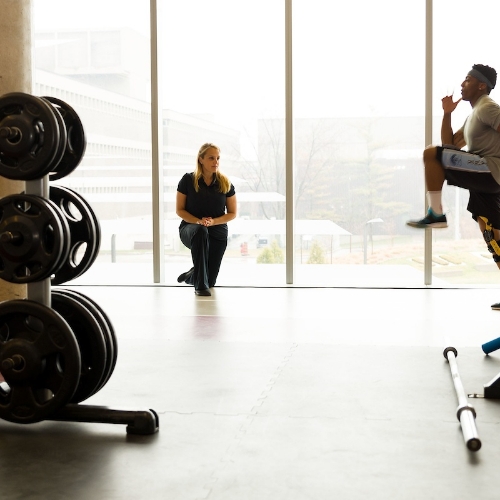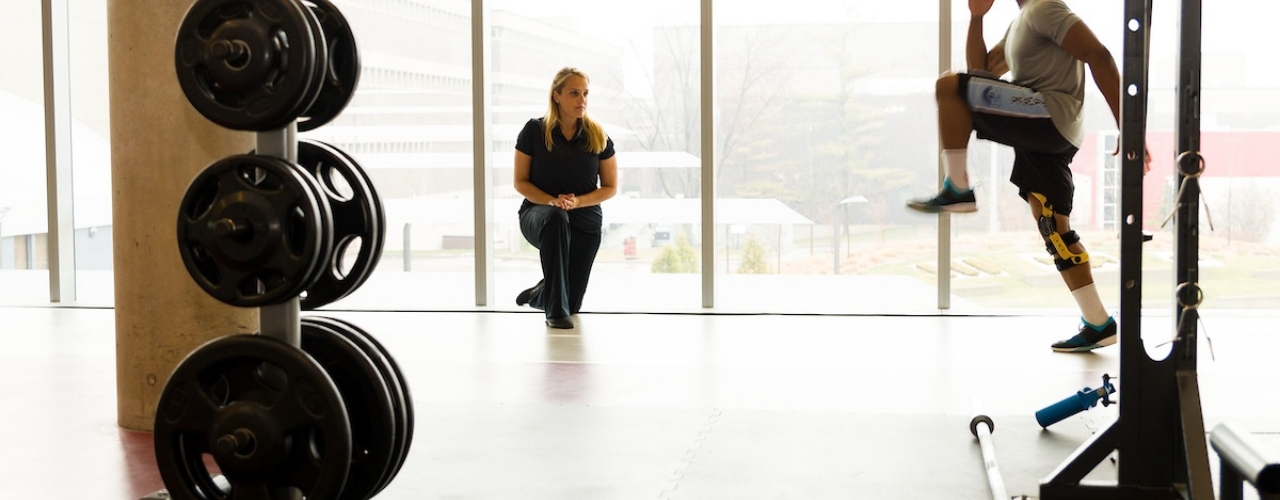
How Physiotherapy Can Help You Prevent an ACL Injury!
Did you know adolescent female athletes are up to eight times more likely to tear their ACL than boys? Fortunately, there are proven methods for reducing this risk and enhancing your function and sports performance simultaneously.
Our physiotherapists and athletic trainers are highly trained in identifying who may be susceptible to an ACL injury and can provide the tools to reduce these risks.
The anterior cruciate ligament (ACL) is one of the most common knee injuries athletes of all ages and abilities face. Certain sports increase the risk of an ACL injury, but playing sports is not the only way to tear your ACL. Our physiotherapists and athletic trainers can teach you how to minimize risks no matter what activities or sports you enjoy.
We will perform a comprehensive analysis focusing on assessing the individual’s ability to produce controlled movement through coordinated muscle activity (i.e., neuromuscular control). Research has shown that programs emphasizing neuromuscular control reduces the risk of tearing the anterior cruciate ligaments (ACL).
If you’re interested in minimizing the risk of an ACL injury, contact Sports Medicine Experts today and schedule an assessment with one of our specialists.
Our physiotherapists and athletic trainers will identify any risk factors associated with tearing the ACL and provide a proven program of exercises to minimize these risks and maximize their results!
What are the risk factors for ACL injuries?
The inability to control movement through the variety of activities typical in sports appears to be the most important reason for the higher rate of ACL injuries in individuals and even more so in females.
As a general rule, females are less effective in stiffening their knees with their contraction of the knee musculature. Regardless of gender, the inability to achieve a maximum contraction to straighten the knee significantly decreases the ability to control the forward movement of the thigh bone over the shin bone, resulting in ACL injury.
Females are also more prone to awkward or inappropriate body movements and muscle contractions before the injury. The sequence of muscle contraction may be limited or impaired in females and contribute to a higher risk of injury.
Most ACL injuries (tears) occur from a quick but awkward stop, such as landing from a jump or a sharp cut to change direction. Most injuries are the result of deceleration (slowing) type movements. Combined with a lack of or deficient ability to coordinate the muscles’ contractions, these activities increase an individual’s risk of injury.
Women are more likely to tear the ACL, up to eight times more frequently than boys/men. There are some possible, although not conclusive, reasons for females to be more susceptible to injury, including:
Hormonal differences: Generally, hormonal differences are considered a “trend,” not a causative reason, meaning there seem to be higher incidents of injury, and it may be one of many factors that contribute to the issues but not a “cause” by itself.
Femoral notch differences: Regardless of gender, smaller notches (i.e., the area where the ACL attaches to the bone) have an increased rate of ACL injury.
The knee joint structure: Individuals with a greater range of motion and less muscle mass around the knee tend to have looser joints and more instability. These factors are not considered causative factors but contributing factors.
Weak core: If the leg muscles are strong, but the core muscles (i.e., abdominals, hip/pelvis, and back muscles) are weak, the base of control deficits will make it difficult to properly stabilize the lower extremities during the dynamic movements needed in sports. This core weakness sets the stage for injury.
Regardless of the limitations and restrictions, our physiotherapists and athletic trainers can help. We will assess your ability to control movements and provide preventative drills and exercises to maximize your ability and minimize the risk of injury!
How ACL prevention programs help reduce the risk of injury
Our physiotherapists and athletic trainers will start with a biomechanical assessment and a movement screen to identify all the factors that may put you at risk for an ACL injury. Through this assessment, we will also check strength, balance, and coordination to give a complete picture of the individual and their abilities.
We will use this information to develop a comprehensive program emphasizing hip and hamstring training, core stabilization, and neuromuscular training.
Next, we will focus on progressing your strength and dynamic stability to restore function and prevent injuries. The emphasis will shift to work on balance and coordination exercises to stimulate the nervous system.
Your athletic trainer will then incorporate activity/sport-specific treatments to assist you in maximizing your training and preparing you for injury-free participation. Each program will include the “at-risk” situations for noncontact ACL injuries, like how to properly decelerate, cut or change directions, and proper landing techniques.
Finally, your therapist at Sports Medicine Experts will create a targeted, individualized plan of care for you to continue on your own, including in-season training, to maximize your recovery and prevent future injuries!
Find out more about Sports Medicine Experts ACL prevention programs today!
There are many possible factors related to ACL injuries, and our physiotherapists and athletic trainers at Sports Medicine Experts know how to identify these risks and develop programs to prevent injuries.
Request an appointment today, and learn more about our ACL prevention programs!

